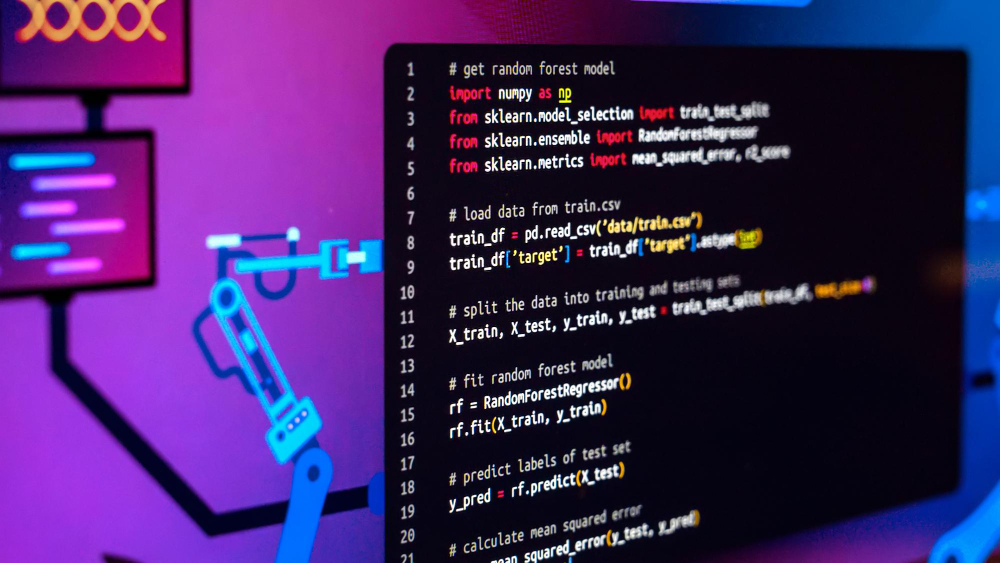Welcome to the world of frontend development, where creativity and technology collide to create stunning user experiences. As a front-end developer, you can shape how users interact with websites and applications. But with great power comes great responsibility – writing clean and maintainable code.
In this ever-evolving digital landscape, having clean and maintainable code is crucial for success. It improves the overall performance of your website or application and makes it easier for other developers to understand and collaborate on your codebase. So, let’s dive into clean front-end code and discover best practices that will make your projects shine!
The importance of clean and maintainable code in Frontend
Clean and maintainable code is the foundation of any successful front-end project. It ensures that your codebase remains organized, readable, and efficient throughout its lifecycle. Imagine working with a tangled mess of convoluted code – it would be like navigating through a dense jungle without a map!
One key benefit of clean code is enhanced collaboration. When multiple developers work on a front-end project, having well-structured and easily understandable code makes teamwork smoother and more efficient. Clean code allows everyone to quickly grasp the purpose and functionality of different components, reducing confusion and potential errors.
Another advantage of clean code is improved scalability. As your project grows in complexity, maintaining order becomes paramount. By following best practices for cleanliness, you make adding new features or modifying existing ones easier without introducing unnecessary bugs or breaking other parts of the system.
Furthermore, clean code leads to better performance optimization. Well-written frontend scripts load faster, resulting in snappy user experiences that engage visitors. Additionally, when your CSS stylesheets are appropriately organized and optimized, your web pages render quickly and smoothly across different devices.
Not only does clean front-end code have technical benefits but also financial implications for businesses. Maintaining messy or poorly written front-end projects can increase costs as developers spend more hours untangling the spaghetti-like mess instead of focusing on productive tasks.
Writing clean and maintainable front-end code is not just about adhering to best practices; it’s about setting yourself up for success in terms of collaboration, efficiency, scalability, and potentiality while delivering superior user experiences – all while keeping costs under control! So, let’s dive into some practical tips on achieving this coding nirvana.
Understanding the different components of Frontend development
Front-end development is a complex and ever-evolving field requiring a deep understanding of its components. One of the critical components is HTML, which forms the structure and content of web pages. It provides the foundation upon which other front-end technologies can be built.
Another essential component is CSS, which controls web page presentation and visual styling. With CSS, developers can manipulate colors, layouts, fonts, and other design elements to create visually appealing websites.
JavaScript is yet another crucial component in frontend development. It adds interactivity and dynamic functionality to web pages, allowing users to interact with elements such as buttons, forms, sliders, and more.
Frameworks like React or Angular are also integral parts of front-end development. These tools provide a structured approach to building complex user interfaces by breaking them into reusable components.
A solid understanding of these components helps developers build clean and maintainable code by clearly grasping how each piece fits together in the overall architecture of a website or application, allowing for more efficient coding practices.
In addition to these core components, front-end developers need knowledge about browser compatibility issues, performance optimization techniques, and accessibility standards.
This holistic understanding empowers developers to deliver high-quality front-end experiences accessible across different devices and browsers.
To summarize (never write summaries), mastering the components involved in front-end development is essential for creating clean and maintainable code. With expertise in HTML, CSS, Javascript, and frameworks and an awareness of browser compatibility issues, optimization, and accessibility standards, a developer can craft exceptional user experiences while ensuring their codebase remains organized, easy to read, and scalable.

Best practices for writing clean and maintainable code in frontend
Best Practices for Writing Clean and Maintainable Code
When writing clean and maintainable frontend code, following best practices is essential. These practices make your code easier to read and understand, help reduce bugs, and improve overall productivity. Here are some basic best practices that you should consider:
1. Consistent Formatting: Maintaining consistency in your code formatting helps in readability and ensures that the codebase looks uniform. Use proper indentation, spacing, and naming conventions throughout your project.
2. Modular Approach: Break down your code into smaller modules or components with a specific responsibility. This makes it easier to manage and maintain each piece of functionality individually.
3. Comments: Adding comments to explain complex logic or the purpose of certain sections can be incredibly helpful for future developers who work on the project. However, avoid over-commenting as it can clutter the code.
4. Proper Documentation: Documenting your codebase with clear instructions on using different functions or components will save you and other team members time when they need to refer back later.
5. Avoid Repetition: Duplicating blocks of code increases file size and makes maintenance more challenging if changes are required later on. Instead, strive for reusable functions or components that can be easily modified.
6. Error Handling: Implement robust error handling techniques such as try-catch blocks or error messages to ensure graceful handling of errors without crashing the entire application.
7.Avoid Magic Numbers/Strings: Replace any hard-coded values with constants or variables so that they are easier to update across multiple instances within the application.
By following these best practices, you can write cleaner front-end code that is easier to maintain over time.
Tools to help organize and optimize code
Tools to Help Organize and Optimize Code
When writing clean and maintainable front-end code, having the right tools in your arsenal can make all the difference. These tools help you organize your code and optimize its performance. Let’s look at some essential tools that every frontend developer should know.
First up is linting. Linting tools like ESLint or JSLint analyze your code for potential errors, bugs, and stylistic issues. They enforce consistent coding standards and catch common mistakes before they become more significant problems. Using a linter, you can ensure that your code follows best practices and remains readable for yourself and other developers.
Another helpful tool is a package manager like npm or Yarn. These tools allow you to manage dependencies in your project efficiently. Instead of manually downloading files individually, you can install external libraries, frameworks, or plugins with just a few commands. This saves time and ensures that you are using the most up-to-date versions of these dependencies.
Version control systems like Git are crucial for collaboration on frontend projects. With Git, multiple developers can work on the same codebase simultaneously without overwriting each other’s changes. It allows you to track changes made to files over time, revert to previous versions if needed, and seamlessly merge different branches.
For optimizing performance, bundlers like Webpack come in handy. Bundlers bundle all your JavaScript modules into a single file (or multiple files), reducing the number of HTTP requests the browser makes when loading your website – resulting in faster page load times.
CSS preprocessors such as Sass or Less enable you to write CSS more efficiently by introducing variables, mixins, nested selectors, and other advanced features not available in plain CSS syntax alone.
These preprocessors compile into standard CSS that browsers understand while making development easier through their additional functionality.
Code editors like Visual Studio Code, Sublime Text, or Atom provide a range of features that enhance your
Debugging and troubleshooting techniques
Debugging and troubleshooting are essential for frontend developers to ensure their code is clean and maintainable. When working on a project, bugs will inevitably arise, but you can quickly identify and fix them with the proper techniques.
One of the first steps in debugging is understanding the problem. Take time to thoroughly analyze the issue by reviewing error messages, examining your code logic, and using console.log statements to track variables and values. This helps pinpoint where things may be going wrong.
Once you have identified the problem area, break it into smaller parts. This allows you to isolate specific sections of code that could be causing issues. By narrowing down the scope of your investigation, you can focus on finding a solution more efficiently.
Feel free to reach out for help when needed. Discussing problems with colleagues or seeking guidance from online developer communities can provide fresh perspectives on troubleshooting approaches.
Another technique is systematic testing. Methodically test different scenarios and inputs to replicate the bug consistently. This helps uncover patterns or dependencies that may contribute to its occurrence.
Document your findings as you go along. Keep track of what worked and what didn’t so that if similar problems occur in future projects or updates, you’ll have valuable reference material at hand.
Remember, debugging isn’t just about fixing immediate issues – it also contributes towards writing cleaner code by identifying areas for improvement in your development process.

Collaborating with a team on frontend projects
Collaborating with a team on frontend projects is essential to building successful and efficient web applications. When multiple developers are working together, it’s crucial to establish clear communication channels and follow standardized processes.
It’s essential to have a version control system in place, such as Git, which allows for seamless collaboration and easy tracking of changes made by different team members. This ensures everyone works on the latest codebase and eliminates conflicts or overwritten work.
In addition to version control, using a project management tool like Jira or Trello can help streamline the development process. These tools allow you to assign tasks, set deadlines, track progress, and communicate within the team. Having everything organized in one place makes it easier for everyone involved to stay on top of their responsibilities.
Regular meetings or stand-ups can also significantly contribute to effective collaboration. These meetings allow team members to discuss their progress, address any challenges they may be facing while coding the frontend components, and share insights or best practices learned along the way.
Furthermore, establishing coding conventions and style guidelines within the team ensures consistency throughout the project. This includes decisions about indentation styles (spaces vs. tabs), naming conventions for variables and functions (camel case vs. snake case), and commenting guidelines (when and how extensively comments should be used), among others. Consistency in code style improves readability and makes maintenance much easier down the line.
Fostering a collaborative mindset amongst team members is vital. Encouraging open communication where ideas are freely shared fosters creativity while ensuring that feedback is constructive rather than destructive and helps maintain morale within the group.
Adhering to these practices when collaborating on frontend projects as part of a development team will result in higher-quality codebases that are more robust both now and in future iterations
Continuously improving code through refactoring.
One of the critical aspects of writing clean and maintainable frontend code is continuously improving it through refactoring. Refactoring involves restructuring existing code to improve its readability, performance, and quality without changing functionality.
Regularly reviewing and refactoring your codebase can eliminate redundancies, optimize algorithms, and simplify complex logic. This not only improves the efficiency of your application but also makes it easier for other developers to understand and work with your code.
When refactoring code, focusing on one specific area or feature at a time is essential. This allows you to make incremental improvements without introducing bugs or breaking existing functionality. By taking small steps towards improvement, you can gradually enhance the overall quality of your codebase without overwhelming yourself or your team.
Another essential aspect of refactoring is maintaining proper documentation throughout the process. Documenting changes made during refactoring helps understand why certain decisions were made and provides valuable insights for future reference.
Additionally, testing plays a crucial role in ensuring that refactored code behaves as expected. Writing unit tests before making modifications helps identify potential issues early on and ensures that desired functionality is maintained after each refactor.
Don’t forget about version control systems like Git, which allow you to track changes made during the entire lifecycle of a project, including refactors. Using branches effectively enables experimentation with different approaches while maintaining a stable central unit.
Continuously improving code through refactoring should be an ongoing practice rather than a one-time task. By prioritizing regular review sessions and dedicating time to enhancing existing codebases, you can ensure that your front-end applications remain robust, scalable, and easy to maintain.
Conclusion: The impact of clean and maintainable code on overall project success
The impact of clean and maintainable code on overall project success cannot be overstated. Writing front-end code with cleanliness and maintainability in mind leads to many benefits.
Clean code is easier to understand and navigate. This makes it simpler for developers to make updates, fix bugs, or add new features without spending excessive time deciphering the existing codebase. It also allows for more efficient collaboration within a team, as everyone can easily comprehend each other’s work.
Maintainable code reduces the likelihood of introducing new bugs or breaking existing functionality when making changes. By following best practices such as modularization, using meaningful variable names, and properly documenting the codebase, developers can avoid common pitfalls that lead to errors down the line.
Furthermore, writing clean front-end code improves performance by optimizing load times and reducing resource consumption. Well-organized code ensures that only necessary assets are loaded when needed and eliminates unnecessary dependencies or redundant scripts.
Not only does clean frontend code benefit development teams internally, but it also enhances user experience externally. Fast-loading web pages with smooth interactions contribute to positive user experiences, increasing customer satisfaction and retention.
Prioritizing cleanliness and maintainability in front-end development has far-reaching effects on project success. It streamlines development processes, minimizes errors, boosts performance, and improves user experience – all contributing factors to achieving project goals efficiently.
So, next time you write front-end code, remember to keep it clean!
